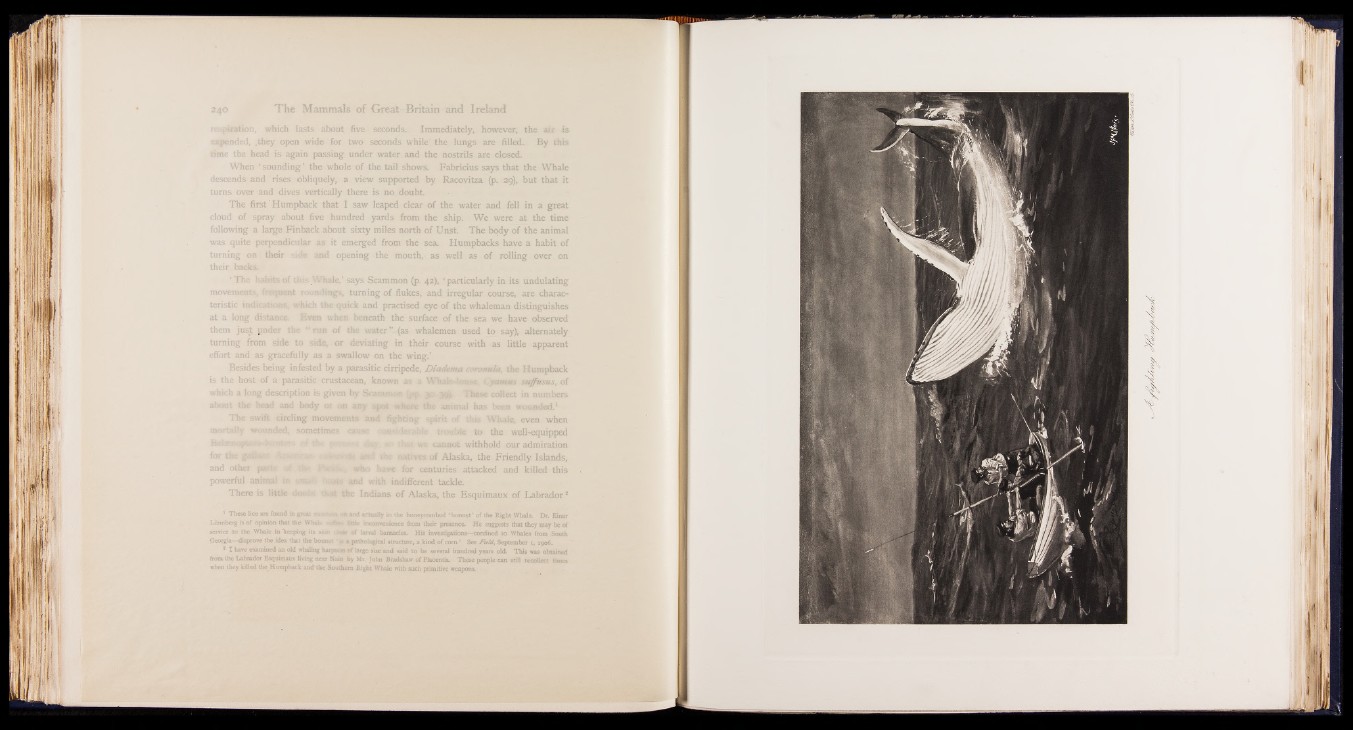
re -T ration, which lasts about five se<:onds. Immediately, however, the air is
onds while the lungs are filled. By this
rater and the nostrils are closed.
When ‘ sounding ’ the whole of the tail shows. Fabricius says that the Whale
descends and rises obliquely, a view supported by Racovitza (p. 29), but that it
turns over and dives vertically there is no doubt.
The first Humpback that I saw leaped clear of the water and fell in a great
cloud of spray about five hundred yards from the ship. We were at the time
following a large Finback about sixty miles north of Unst. The body of the animal
was quite perpendicular as it emerged from the sea Humpbacks have a habit of
turning on their side and opening the mouth, as well as of rolling over on
‘ The habits of this Whale,’ says Scammon (p. 42), ‘ particularly in its undulating
movements, frequent roundings, turning of flukes, and irregular course, are characteristic
indications, which the quick and practised eye of the whaleman distinguishes
at a long distance. Even when beneath the surface of the sea we have observed
them just under the 'run of the water” (as whalemen used to say), alternately
turning from side to side, or deviating in their course with as little apparent
effort and as gracefully as a swallow on the wing.’
Besides being infested by a parasitic cirripede, Diadema coronulti, the Humpback
is the host of a parasitic crustacean, known as a Whak^ksm, iyam us suffusus, of
which a long description is given by Seaman« km These collect in numbers
and other pat
powerful an in
There is
circling movements and fighting spirit o f this Whale, even when
ided, sometimes cause eo&uderable trouble to the well-equipped
ihM wt cannot withhold our admiration
ihf- natives of Alaska, the Friendly Islands,
* --iv- who have for centuries attacked and killed this
as »» sm&V} and with indifferent tackle,
little doubt the Indians of Alaska, the Esquimaux of Labrador1 2 3
1 These lice are found in great on and actually in the honeycombed ‘bonnet’ of the Right Whale. Dr. Einar
Lonnberg is of opinion that the Wb&ie euM&ctt fettle inconvenience from their presence. He suggests that they may be of
service to the Whale in keeping its skis ck*r of larval barnacles. His investigations—confined to Whales from South
Georgia—disprove the idea that the bonnet *4» a pathological structure, a kind of com.’ See Field, September 1, 1906.
3 1 have examined an old whaling harpoon of large size and said to be several hundred years old. This was obtained
from the Labrador Esquimaux living near Nan by Mr, John Bradshaw of Placentia. These people can still recollect times
when they killed the Humphack and the Southern Right Whale with such primitive weapons.